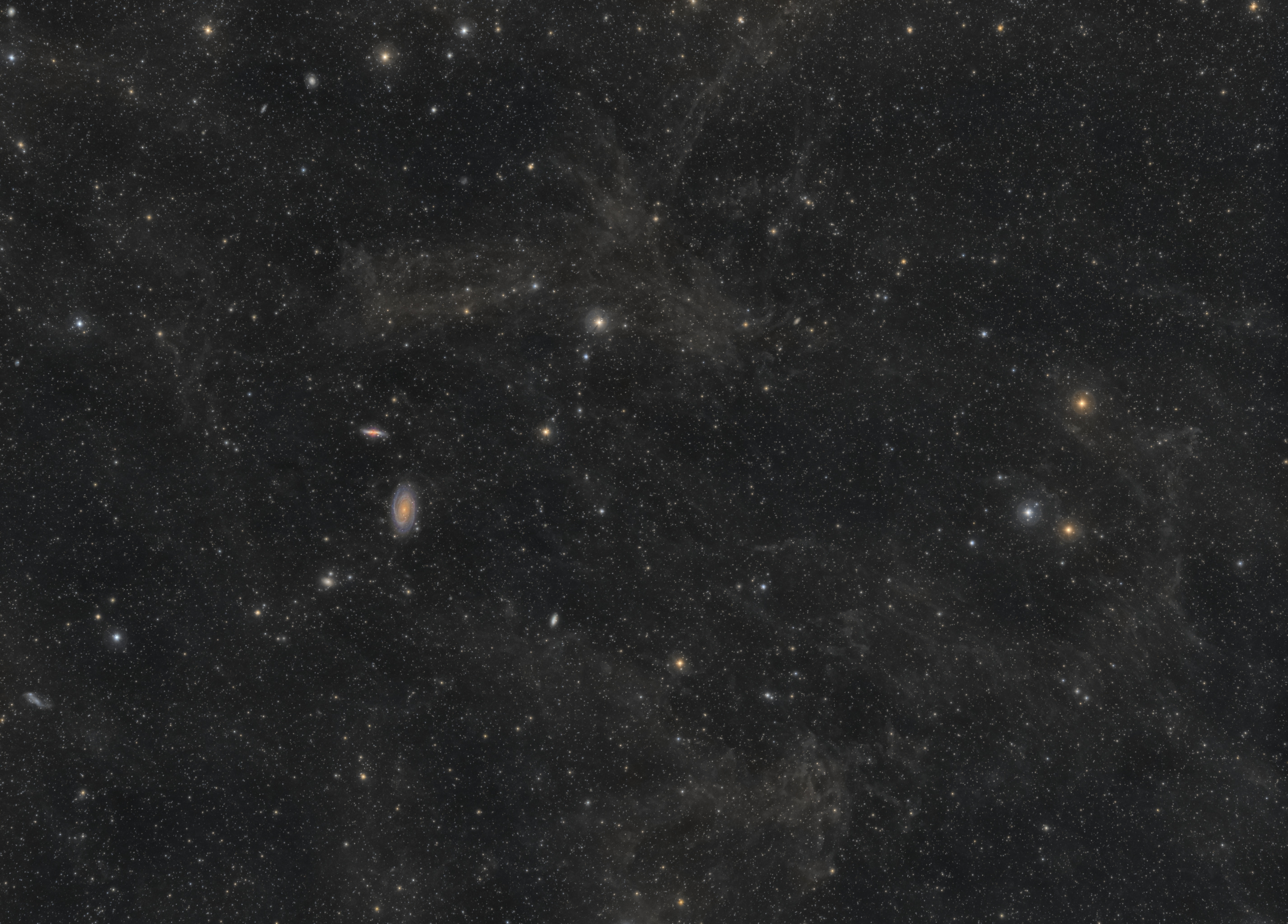The Galactic Cirrus around M81 – a 2 panel mosaic.
I know, I know, not as flashy as my other pictures, and yet it is one of the most interesting astronomical phenomenon I’ve ever imaged! Unlike typical nebulas, integrated flux nebulas (IFN) lie outside of the plane of the Milky Way : rather than being illuminated by a single star, they are illuminated by the total ‘integrated flux’ of all the stars in the Milky Way. IFN were actually first identified relatively recently, because as it turns out, they are not very bright. And it only took me 58 painful hours to come to that realization!
Equipment
- Samyang 135mm f/2
- QHY163M
- Baader narrowband filters
- Antlia LRGB filters
- Sky-Watcher HEQ5 Pro
- QHY5L-II-C and QHY 30mm guidescope
Acquisition (Total : 58.8h)
- Location : Backyard, bortle 5
- Ha : 14.8 hours
- L : 26 hours
- RGB : 6 hours each
Processing (PixInsight)
Individual channel processing
- Gradient removal (DBE)
- Background levels equalization (dnaLinearFit)
- GradientMergeMosaic
- Noise reduction (TGV and MMT)
Luminance processing
- MaskedStretch
- HistogramTransformation (with an inverted star mask)
- Multiscale processing (inspired by this excellent tutorial from RBA)
- LocalHistogramEqualization on large scale structures
- Sharpening (MMT) on large scale structures
- CurvesTransformations on small scale structures
Color processing
- Ha and R dynamic blend (tutorial soon)
- ChannelCombination
- ColorCalibration
- ArcsinhStretch
- MaskedStretch
- Multiscale processing
- ColorSaturation on medium scale structures (to target M81)
- Chrominance noise reduction (SCNR and MMT) on appropriate layers
LRGB processing
- LRGBCombination
- HDRMultiscaleTransform
- Star reduction (tutorial)
- Final adjustments (Curves, MMT, ColorSaturation…)
Taken in February 2021 – April 2021

Great image and it’s very helpful that you include your processing steps! Any chance in the future that you will include a more in-depth processing tutorial where you basically go through the entirety of processing an image and all the steps and settings used to achieve the final product? I think there is much to learn from your process as apparent by the excellent quality images.
Thank you! I will certainly keep this idea in mind 🙂